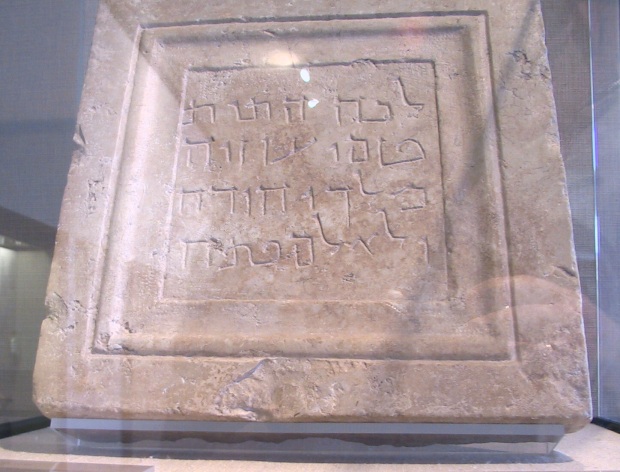|
|
|
|
|
|
|
|
|
|
|
Question: Uzziah, King of Judah. Answer: A stone tablet (35 x 34 x 6 cm) that bears the inscription "Hither were brought / The bones of Uzziah / King of Judah / Do not open!" This epitaph once marked the place, now unknown, where the bones of King Uzziah were reinterred many centuries after his death (8th century B.C.). It is written in Aramaic in a style of script that dates it to the latter part of the Second Temple period. The Bible, which records Uzziah's deeds, fortification projects, and conquests, also describes his burial. 2 Chronicles 26:23 Uzziah rested with his fathers and was buried near them in a field for burial that belonged to the kings, for people said, "He had leprosy." The leper king (who received leprosy as a punishment from God) was not buried in the royal tombs within the City of David, but elsewhere, likely outside the city walls (also noted by the first century historian Josephus: Antiquities of the Jews, IX, 10, 4). With the expansion of Jerusalem at the end of the Hasmonaean period or later during Herod's reign, it is likely that the city now encompassed the burial area requiring the remains to be moved. This stone tablet probably served to seal or mark the burial niche. This object is very important due to it's reference to an early king of Judah, even though it was crafted in a later period. It most certainly was based upon earlier inscriptions on the original tomb location. |
